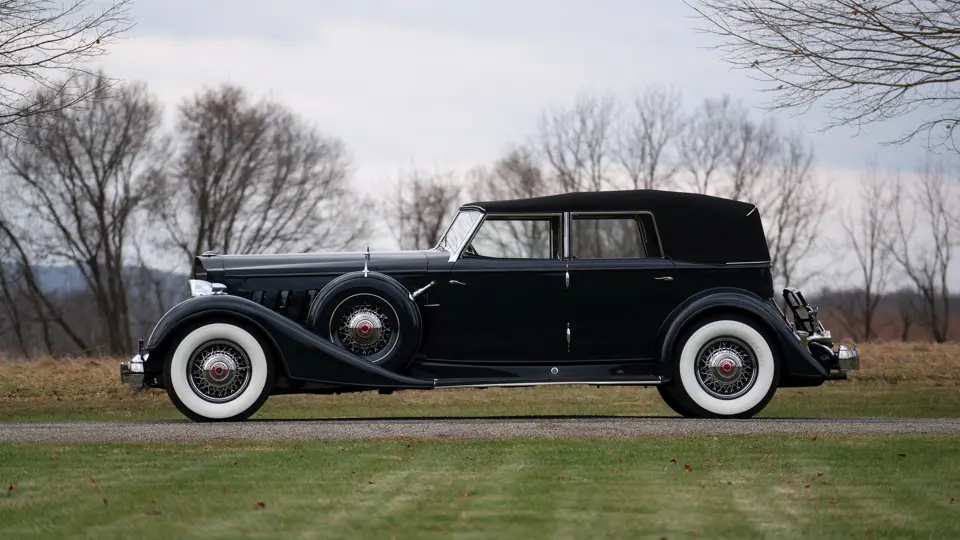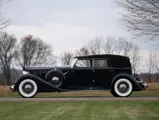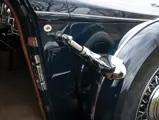
1934 Packard 1108 Twelve Convertible Sedan by Dietrich
{{lr.item.text}}
$1,325,000 USD | Sold
{{bidding.lot.reserveStatusFormatted}}
- Offered from a prominent private collection
- Formerly owned by renowned enthusiasts Harold Crosby and Lorin Tryon
- Immaculate restoration by marque specialists Stone Barn
- Presented at the 2016 Pebble Beach Concours d’Elegance; not shown since
- Complete with original firewall vehicle number tag
- Classic Car Club of America (CCCA) Senior First Prize winner
- One of the finest Dietrich Individual Custom Packards available
A competitor is said to have famously described Raymond Dietrich as “a man that the gods smiled upon.” Indeed, before striking out on his own in 1925, the redheaded young designer built an enviable résumé that included some of America’s most prestigious custom coachbuilders. He was an apprentice draftsman at Brewster, where he met Thomas Hibbard, with whom he would co-found LeBaron in New York City. Hibbard eventually went to Paris and decided to stay, while Dietrich was lured to Detroit by the Murray Body Corporation, through Edsel Ford’s influence. There, he took 50 percent ownership of a new firm, Dietrich Inc., which initially worked largely on Lincoln chassis, no doubt to the enthusiasm of the intellectual Mr. Ford.
However, Dietrich’s lasting glory would come as the result of the custom bodies that he produced for several Packard agencies. One of these agencies took three custom show cars that he bodied on a nationwide tour in 1926. At tour’s end, Dietrich received a shocking 150 orders. This was a number that did not escape Packard President Alvan Macauley’s notice. Macauley ordered another 175 bodies, beginning a long association with Dietrich and Packard, which resulted in hundreds of custom and semi-custom bodies being ordered for the cars from East Grand Boulevard.
The most prestigious of these were the Individual Customs, which were produced on Super Eight and Twelve chassis from 1932 to 1934. These cars were built largely to individual tastes, as true “factory customs” are. Their striking bodies were known for their lithe and sporty lines, which were created by the vee’d windshields, a beltline that curved away from the windshield, and an extraordinarily long hood line, were assembled on massive 147.5-in. wheelbase chassis. They were tremendously expensive, particularly in twelve-cylinder form, and with a modified L-head V-12 that could displace 445.5-cu. in. and develop 160 bhp. The Dietrich Packard had power to match its style. It was a masterpiece of form and function.
VEHICLE NUMBER 1108-23
The Eleventh Series Twelve Convertible Sedan is one of the most famous, prestigious, and desirable of all Dietrich Individual Customs, especially for this model year, when it was the only open four-door body style offered by Dietrich. Examples of this style can be found in the prestigious Nethercutt Collection, whose “Orello” is world-famous, as well as in numerous esteemed private stables worldwide. It is estimated that only 10 were produced, of which seven remain extant today.
The example offered here is identified by its original vehicle number tag, on the firewall, as having been delivered by the Packard Seattle Co. on 30 April 1934. Its original owner is believed to have been a well-to-do lady who owned upscale women’s clothing stores on the West Coast. Later owner Lorin Tryon, legendary longtime co-chair of the Pebble Beach Concours d’Elegance, recalled that it had been “a familiar participant in early parades in Seattle.” Later it moved to Northern California, where it was owned by a Mr. Chenier and by a contractor by the name of Marchant, from whom Tryon purchased it in the early 1960s.
Tryon noted that a precursor to California’s famous “kustomizers” had added a built-in trunk to the rear of the car. Using another of the surviving Dietrich Individual Custom convertible sedans as a pattern, local craftsman Tom Lillibridge was able to restore the rear of the body to its correct original configuration. It was then sold to Roger Henderson and later passed to Harold Crosby, a well-known early collector of Packard Twelves and longtime Pebble Beach participant (as well as the concours’ chief judge of American Classics from 1975–1994), who completed the restoration in a striking two-tone green livery. The engine was rebuilt by Packard Twelve expert, Charlie Last.
Crosby sold the Twelve in the summer of 1977 to Harry Rinker of Newport Beach, who displayed it for the first time at the Classic Car Club of America Grand Classic in Santa Barbara that year, scoring a perfect 100 points; eventually it achieved Senior status (badge no. 824). It would remain a favorite in Mr. Rinker’s collection for over 30 years, regularly driven and often with the top down, and during his ownership was featured both in an issue of the Packard Cormorant and in Edward J. Blend’s famous reference work, The Magnificent Packard Twelve of Nineteen Thirty-Four.
In the late 2000s, Rinker was convinced to sell the car to a collector in the West. Several years later it was added to the present owner’s distinguished collection, which has over the years been home to some of the very finest Dietrich Individual Custom Packards extant. A fresh restoration was soon undertaken by the noted specialists of Stone Barn Automobile Restoration in Vienna, New Jersey, finished to an extremely high level of fit, finish, and detail, in the crisp color scheme of Packard Blue, which is believed to be the original color, with brown leather interior and a black cloth top. The owner reports that at the 2016 Pebble Beach Concours d’Elegance, the car was judged “Without Flaw” and has not been shown in any concours or events since.
This is without doubt one of the very finest Dietrich Individual Custom Packards known, and may be the finest presently available. It is superlative and worthy of the significant collectors so proudly featured in its long history.









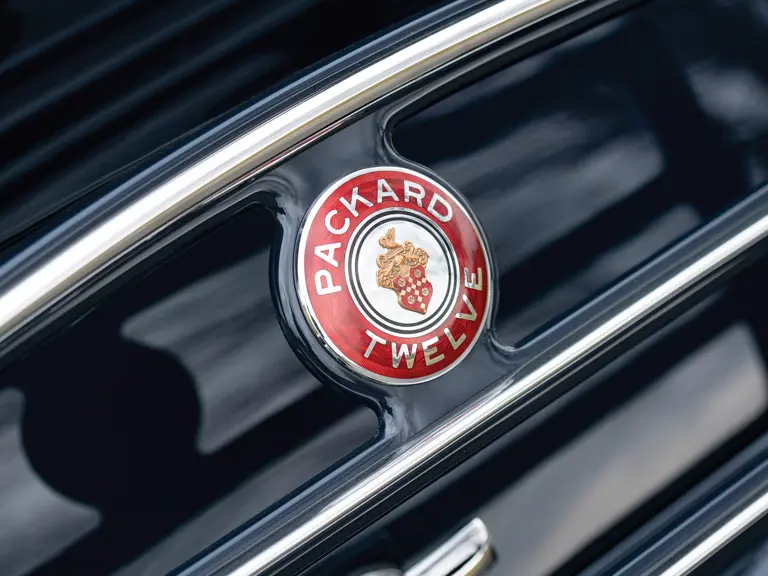








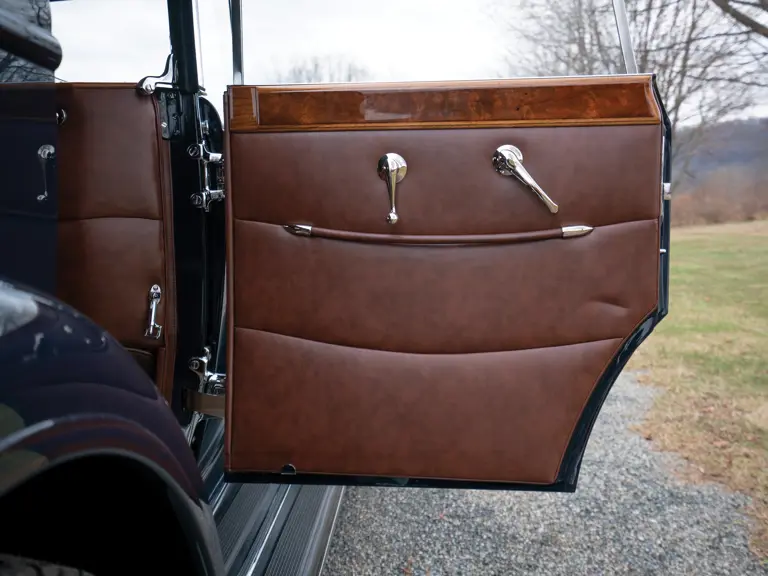










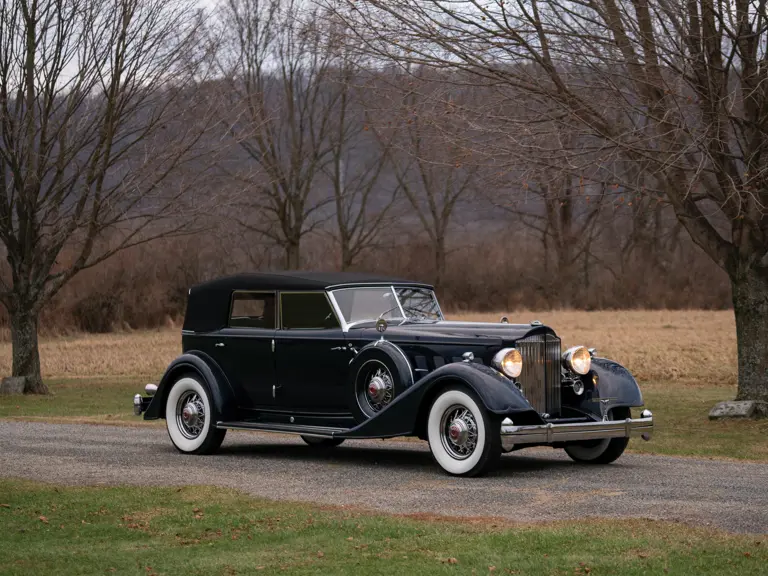

 | Amelia Island, Florida
| Amelia Island, Florida
